NEHU Professor research highlighted in WHO Impactful Research Repository on COVID-19
The work carried out by Dr. Dinesh Bhatia, Biomedical Engineering Department, North-Eastern Hill University (NEHU), Shillong and his collaborators from Adamas University, Kolkatta led by Prof. Moumita Mukherjee, Dean (R&D), and Dr. Swarnava Biswas, Neotia University, Kolkatta has been recognised and highlighted by World Health Organisation (WHO) website in their "Impactful Research Repository" on COVID-19. The work deploys the use of Internet of Things (IoT)-based infrastructure for early detection, identification and isolation of COVID-19 patients. The system is working on a cloud-based AI-enabled fast and low-cost solution to detect coronavirus infected patients based on Multiple Inference Hypothesis Inference Criterion is the first research that any research group has attempted to do so.
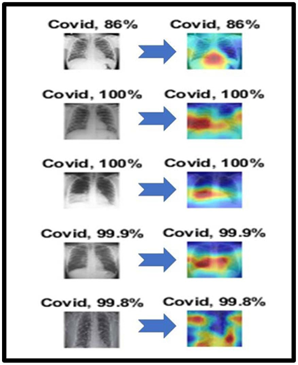
Artificial Intelligence-based system for COVID-19 detection
The originality is in a single point multi-hypothesis based on faster identification of COVID-19 from radiography pictures and other medical vital conditions, with severity score tag for early detection with accuracy scores of more than 90%. The Automated detection tool would provide a helpful second opinion to clinicians and assist them in the screening process more promptly and effectively. The research employs data science and machine learning approaches to analyse radiographic pictures to identify COVID-19.
As per Prof. Mukherjee, “The software employs Artificial Intelligence-based techniques for detecting COVID-19 on chest radiographs (X-rays and CT scans), with other medical vitals such as temperature, oxygen saturation, and even pathological data from blood examination such as leukocyte, lymphocyte and neutrophil count”.
As per Dr. Bhatia, with the support of the government and healthcare sector, additional data is being procured to further expand the study to avoid false negative results and identify asymptomatic patients. Since it is a faster and less expensive technique, it may be considered as a complimentary detection tool with presently available techniques.
Other Contents by Author
North Eastern Hill University, Shillong and the Eager to Forge Ahead (India) foundation of Orissa, held a seminar on the “Life, Humanity and Education of Sri Aurobindo” on February 25th in the Conference Room at U Tirot Sing Syiem Guest House. It commemorated the 150th anniversary of Aurobindo's birth and was part of a series of events celebrating "Azadi Ka Amrit Mahostav."
The seminar was attended by faculty, staff and students of the University. Ms. Farida from the Sri Aurobindo Institute of Indian Culture, Shillong was also present during the said programme. The talk focussed on the life of Sri Aurobindo and his vision for the nation pre and post-independence. The focus was on...
The advent of communication technologies and advanced intervention tools promise to revolutionize the lives of people by removing obstacles and barriers and expanding the scope of access to even the disabled population. Technological advancements can help in social inclusion and accessibility to new technological interventions that are robust and flexible based on their needs. The need of the hour is to provide technological solutions with multidisciplinary approach to resolve the problems and improve the quality of life of disabled, physically challenged and elderly population with focused technological interventions that aim to provide autonomy and independence to persons with disability...
The Department of Biomedical Engineering, in collaboration with the Department of Education, North Eastern Hill University, Shillong organized an International Brain Research Organization (IBRO) APRC Associate School on “Modern Interventional Tools for Children with neurodevelopmental Disorders” from 25th October to 29th October, 2021. The aim of the IBRO-APRC Associate School 2021 provided participants with extensive knowledge to understand the modern interventional tools related to cognitive impairment in children with neuro-developmental disorders and improvement in their functional outcome and quality of life. The School was held in collaboration with the Society for Neurochemistry...
Shillong: The Department of Biomedical Engineering, in collaboration with the Department of Education, North Eastern Hill University, Shillong is organising an International Brain Research Organisation (IBRO) APRC Associate School on “Modern Interventional Tools for Children with neurodevelopmental Disorders” from 25th October to 30th October, 2021. The aim of the current IBRO-APRC Associate School 2021 would be to provide participants with extensive knowledge to understand modern interventional tools related to cognitive impairment in children with neuro-developmental disorders and improvements in their functional outcomes and quality of life. The School is being held in close coordination...
In a 2018 graft case at NEHU Shillong where Central Bureau of Investigation arrested one professor now frames the complainant of the case as an accused along with another person.
Professor Dinesh Bhatia of NEHU Biomedical Engineering department was arrested on charges of allegedly talking bribe of 40,00 rupees.
Bhatia's advocate M Haque on Friday said that the CBI has made the complainant Raghuvendra Pratap Tripathi an accused, on whose written complaint led to the registration of the case.
Raghuvendra Pratap Tripathi was a PhD student under Profesor Bhatia on whose complaint the professor was arrested.
SHILLONG: Diabolic terror tentacle is spreading in Meghalaya a week ahead of the assembly polls where a poll candidate was among five were killed in an explosion in the northeastern state. NCP candidate Jonathone N Sangma, his two security guards and two associates died when suspected GNLA rebels exploded a powerful bomb on Sunday evening in a remote place within his constituency in the East Garo Hills district. The explosion took place at 7.30 in the evening as Sangma and his team was on their way back to home in Williamnagar after holding a huge poll rally. All the passengers inside the scorpio on which they were travelling were killed on the spot. All the bodies were brought to the...
SHILLONG: Meghalaya received a fresh lease of life in its surface communication when prime minister Narendra Modi opened up the Shillong-Tura-Nongstoin Road during his hurricane visit to the north eastern state on Saturday. Modi, who dedicated a hydro power project in Aiazwl in the morning before landing in Shillong opened the vital link road at a function in the state convention centre. In the same function, the Prime minister in a remote control system opened the state BJP office in Bever Road in the capital city a couple of months ahead of the assembly polls. Modi said the road section will boost the entire economic scene of the north eastern state.
To ensure free and fair conduct of the upcoming Legislative Assembly Election 2018 in Meghalaya, the State Level Media Certification and Monitoring Committee (MCMC) is constituted with the Chief Electoral Officer, Meghalaya as the Chairman. The members of the Committee include Additional Chief Electoral Officer, Meghalaya, Expenditure Observer (to be nominated by CEO), Director, Information and Public Relations, Meghalaya, Deputy Director of Field Publicity, Shillong and W Rapheal Warjri, Media Plus, Media Representative. The Joint Chief Electoral Officer will be the Member Secretary. The functions of the Committee is to decide on appeals against orders of the MCMC headed by the...
Shillong was shining as the Meghalaya capital city held the grand finale of the Shillong Hackathon 2017 under the theme Clean and Liveable City was held at Yojana Bhavan Auditorium on Tuesday. Additional Chief Secretary H. Marwein graced the inaugural programme as Chief Guest of the occasion which aimed at finding a proper solution to make the city clean. Under the Hackathon, ideas and corresponding solutions were being solicited from citizens to resolve the given problem statements as submitted by the various departments/agencies. In his addressMarwein said IT solutions can be an effective mechanism to address the various problems which has plagued the city in recent times. Highlighting...
Sarhad will honour Lou Majaw with the coveted Bhupen Hazarika award for rendering an outstanding work at the national and international level. According to a statement, the award aims at creating a strong bond between Maharashtra with Northeast will be given away in October. The Award consists of Rs. 51,000/-, a memento and a certificate. Born in Mawlai, Phudmari, Shillong on the 14th of April 1947 Lou Majaw's first encounter with the guitar was in 1955 at The Sacred Hearts Boys Boarding School. Moving on to Don Bosco Technical School in 1959 to learn tailoring, he spent the next three years till 1962 playing guitar and side drum, genis, sax and trumpet in the School Orchestra. After...




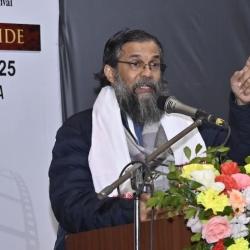
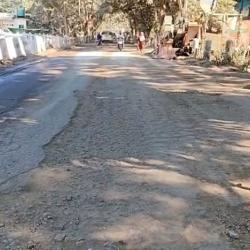
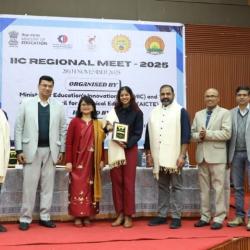
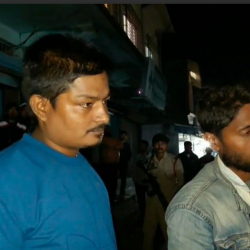
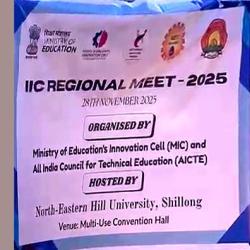
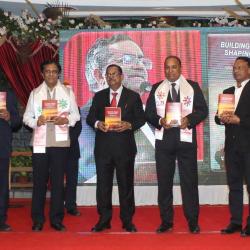

Add new comment